|
 LIFE OF JESUS CHRIST, OVERVIEW LIFE OF JESUS CHRIST, OVERVIEW
Name meaning “savior” or “Jehovah [Yahweh] is salvation”given to the Messiah.
KJV translation of Joshua, son of Nun, in Acts 7:45 and Hebrews 4:8.
Jewish Christian, surnamed Justus, who sent his greetings to the believers at Colosse in the salutation of Paul’s Letter to the Colossians (Colossians 4:11).
Jesus Christ is the Messiah
There are many pages on “Jesus Christ” and I pray that many will see that “JESUS CHRIST”did exist and He always has and always will. It is a crying shame that those which do not believe will end up not seeing His Glorious Face when He comes back to get His Church and those whom believe in Him.
I have as you have noticed, if you have been viewing the website, I love pictures to help visualize what is being said, which helps bring the verses to life. So please be patient as the pages load!
|
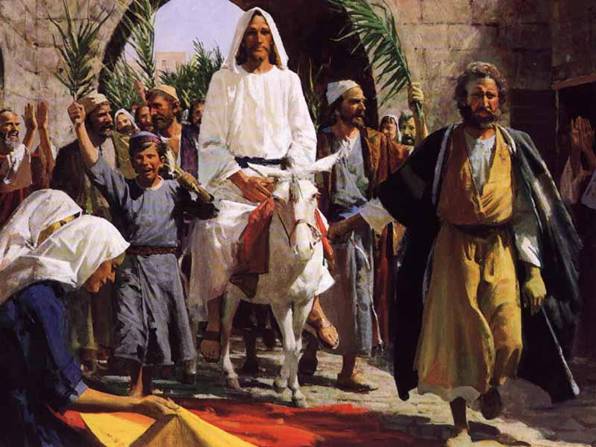 Jesus Christ is the Messiah, Savior, and founder of the Christian church. Some know him by a more personal name. To Christians, he is the Lord of their lives. Regardless of his title, Jesus Christ is the most interesting figure in human history. Jesus Christ is the Messiah, Savior, and founder of the Christian church. Some know him by a more personal name. To Christians, he is the Lord of their lives. Regardless of his title, Jesus Christ is the most interesting figure in human history.
Although he lived on earth only 33 years, he has had the greatest impact of any person who ever lived—even on those who do not believe he is God’s Son.
The Bible describes Jesus Christ in detail—his life, his work, and his teachings—in the four books called the Gospels. Each of the four Gospels has a distinctive purpose.
-
Matthew, for instance, presents Jesus as the long-awaited King of the Jewish people.
-
Mark focuses more on Jesus as the servant of all. Luke tends to present Jesus in a softer light, showing his amazing compassion for the poor.
-
Finally, John describes a love relationship with Jesus.
Each author wrote about Jesus for a different reason. They arranged the events of Jesus’ life slightly differently. A picture of the same person from four different angles is the result. Yet all of the Gospels agree on one thing: Jesus is the Lord of lords and the King of kings.
|
|
|
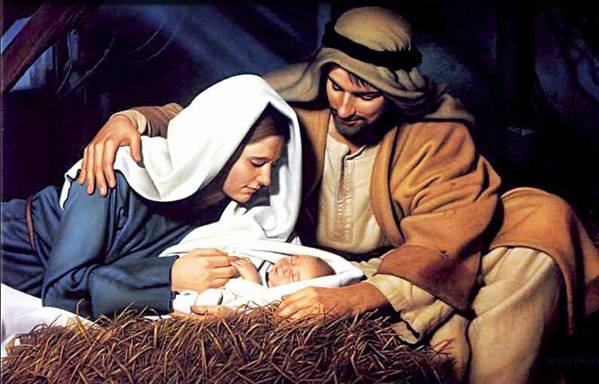 THE LIFE OF JESUS THE LIFE OF JESUS
The following sections present the main events in what may be regarded as the chief stages in the life of Jesus. These stages show a definite progression from Christ’s incarnation or entrance into the world to his dying moments on the cross.
The Gospels do not read like an ordinary biography. Their story is not so much about the life of Jesus as it is about God’s story. The whole presentation of Christ’s life centers on the cross and his triumphant resurrection. It is God’s message to humanity rather than a plain historic account of the life of Jesus.
|
|
|
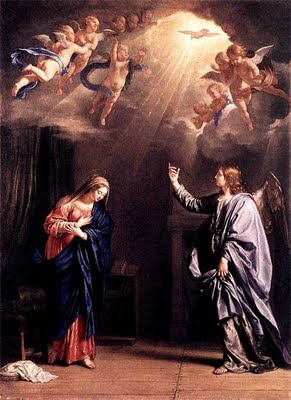 THE INCARNATION THE INCARNATION
The major event of this initial stage was the Incarnation. Only Matthew and Luke give accounts of Jesus’ birth. John reflects on what preceded the birth.
|
|
|
 JESUS’ PRE-EXISTENCE JESUS’ PRE-EXISTENCE
It may seem strange that John began his Gospel with a reference to the Word (John 1:1), but it is in this way that he delivers to the reader an exalted view of Jesus.
John saw Jesus as existing even before the creation of the world (1:2).
In fact, he saw him as having a part in the act of creation (1:3).
Therefore, when Jesus was born, it was both an act of humiliation and an act of illumination. The light shone, but the world preferred to remain in darkness (1:4-5, 10).
Therefore, anyone reading John’s records of the life of Jesus would know at once, before even being introduced to the man named Jesus, that this was no ordinary man. The account of his life and teachings could not be properly understood except by acknowledging that Jesus had always existed. |
|
|
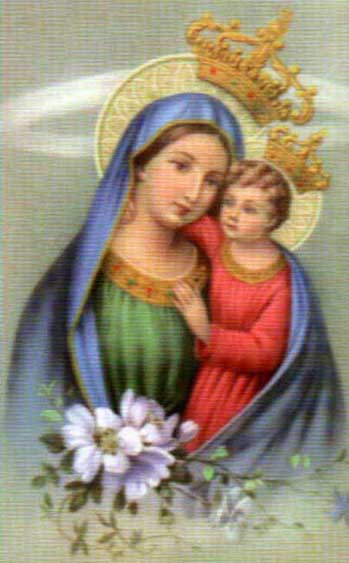 THE VIRGIN BIRTH OF JESUS THE VIRGIN BIRTH OF JESUS
Jesus was surrounded by controversy even from the time of his birth. The birth stories in Matthew 1 and Luke 1-2 say that Jesus Christ was conceived of the Holy Spirit and born of the virgin Mary. In order for Jesus to be fully God and fully man, he could not have been naturally conceived. His miraculous birth is no side note—it is central to the story of Jesus. At the same time, many critics deny this miracle, stating that the early Christians created a rumor.
|
|
|
 THE OLD TESTAMENT PROPHECY THE OLD TESTAMENT PROPHECY
Isaiah 7:14 (King James Version) says that a“virgin” shall “conceive and bear a son…Immanuel.”
Matthew 1:22-23 expressly states that this was fulfilled in Jesus’ birth. This passage has been greatly debated, especially since another credible translation, the Revised Standard Version, changed the King James Version “virgin” to “young woman,” based on the ambiguity of the term in the original manuscripts.
The Hebrew ‘almah refers generally to a young girl who has passed puberty and thus is of marriageable age. Another Hebrew word (bethulah) specifies a woman who is a virgin. The early translators, nevertheless, translated ‘almah as parthenos, which denotes a virgin.
 The following are four popular interpretations concerning the “virgin” prophecy: The following are four popular interpretations concerning the “virgin” prophecy:
1. The “virgin” (Isaiah 7:14) was Ahaz’s new wife and the son was Hezekiah—contemporary characters of Isaiah. But Hezekiah was nine years old when Ahaz began to reign, so this prophecy must look to the future.
2. She was Isaiah’s wife and the son was Maher-shalal-hash-baz. Many scholars support this interpretation because the definite article with ‘almah seems to indicate that “the woman” was known to Isaiah and Ahaz. Also, Isaiah 7:14-16 seems to indicate that the prophecy was to be fulfilled in Isaiah’s time. The difficulty here is that Isaiah’s wife already had a son and so she could not be called a virgin, ‘almah.
3. The prophecy is purely about Jesus Christ, the Messiah. This is the traditional evangelical position, based on the name of the child—Immanuel, “God with us”—and the reference (Isaiah 9:6-7; Isaiah 11:1-5), which points to a divine person.
4. Still, there is a fourth interpretation, which says the prophecy refers to both Isaiah’s day and a future day. This view takes into account the historical fulfillment intended in Isaiah 7:15-16 while seeing the future as being fulfilled through the virgin birth of Jesus, as indicated in Matthew 1:22-23. |
|
|
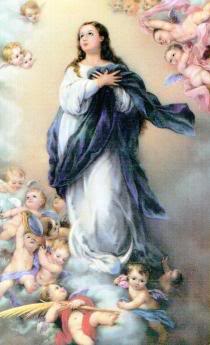 THE GOSPEL RECORDS THE GOSPEL RECORDS
Neither Mark nor John provides an account of the birth of Christ; the actual event is only in Matthew and Luke. Both agree that a virgin, Mary, conceived of the Holy Spirit and bore a son, Jesus. Matthew’s account is simpler and more direct.
Jesus is called the “Christ [or Messiah],” the son of David (Matthew 1:1), who signals the beginning of the kingdom of God. Jesus fulfilled Isaiah’s prophecy (1:22-23) and was born of a virgin (1:18-20).
Therefore, Jesus is “God with us,” now come to “save his people from their sins”(1:21). The scene where Joseph decides to privately divorce Mary is added to give further evidence that Jesus was miraculously conceived. Luke told the nativity story from the perspective of Mary.
The angel Gabriel visited her and announced that she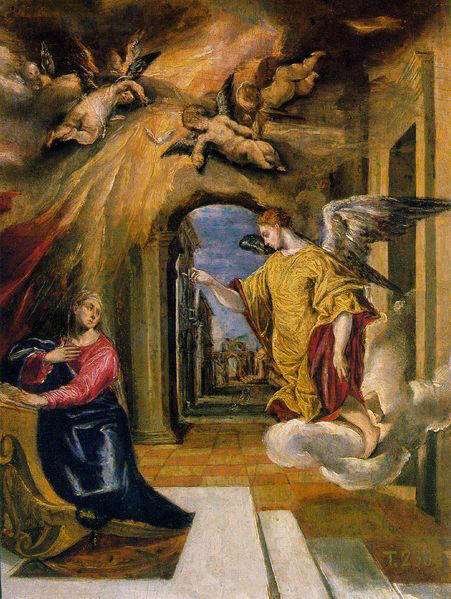 would give birth to the Messiah (Luke 1:26-38). She conceived miraculously by the Holy Spirit, as was foretold by the angel Gabriel: “The Holy Spirit will come upon you; therefore the child to be born will be called holy, the Son of God” (Luke 1:35, RSV). Luke says Mary willingly surrendered to the purposes of God. would give birth to the Messiah (Luke 1:26-38). She conceived miraculously by the Holy Spirit, as was foretold by the angel Gabriel: “The Holy Spirit will come upon you; therefore the child to be born will be called holy, the Son of God” (Luke 1:35, RSV). Luke says Mary willingly surrendered to the purposes of God.
John simply says that the Word became flesh and dwelt among us. Matthew and Luke fill in some of the details of how this happened. Each approaches the subject from a different point of view, but the supernatural is evident in both. The coming of Jesus is announced beforehand, through dreams to Joseph in Matthew’s account (Matthew 1:20-21) and through an angel to Mary in Luke’s account (Luke 1:26-33).
Matthew leaves his readers in no doubt that the one to be born had a mission to accomplish—to save people from their sins (Matthew 1:21). Luke sets his story of Jesus’ coming in an atmosphere of great rejoicing. He includes exquisite songs, which have formed part of the church’s worship ever since (Luke 1:46-55, 68-79).
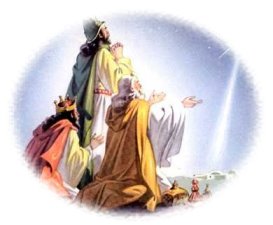 The visit of the wise men in Matthew 2:1-12 is significant because it links the beginning of the Gospel to its ending (compare to 28:19-20). A similar emphasis is introduced in the angel’s announcement to the shepherds in Luke 2:14 and in Simeon’s song (2:32), where he predicts that Jesus would be a light for Gentiles as well as a glory for Israel. The visit of the wise men in Matthew 2:1-12 is significant because it links the beginning of the Gospel to its ending (compare to 28:19-20). A similar emphasis is introduced in the angel’s announcement to the shepherds in Luke 2:14 and in Simeon’s song (2:32), where he predicts that Jesus would be a light for Gentiles as well as a glory for Israel.
The flight into Egypt for safety (Matthew 2:13-15) shows the contribution of a gentile nation in providing protection for a Jewish child. One feature of the birth stories in Matthew and Luke is that they are both linked to genealogies. It is difficult to harmonize these genealogies since they appear to be drawn from different sources, but the purpose in both cases is to show that Jesus was descended from Abraham and David.
The latter fact gave rise to Jesus’ title as Son of David. Luke was the only Gospel writer who attempted to link the coming of Jesus with events in secular history. Since he was a doctor by trade, some imagine his attention to detail shows in his writing. Although problems arise over the dating of the census of Quirinius (Luke 2:1-2), Luke mentions it to demonstrate that the Christian faith is a historic faith centered on a historic person. |
|
|
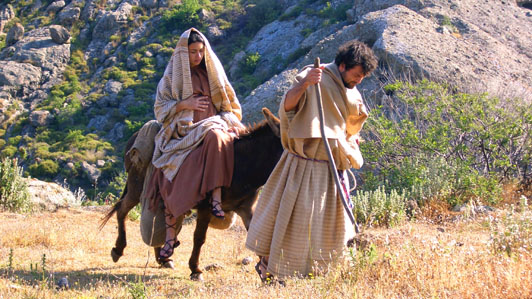 THE SIGNIFICANCE OF THE VIRGIN BIRTH THE SIGNIFICANCE OF THE VIRGIN BIRTH
Some of the earliest church fathers stressed the virgin birth more than any other event in Jesus’ life as proof of the Incarnation and that Christ was indeed God. It was essential to their Christology—the significance of Christ’s divine role. Justin Martyr and Ignatius defended the virgin birth against opponents at the beginning of the second century. The virgin birth continued to be a hot topic for the next three centuries. Gnosticism was a belief that Christ descended directly from heaven and so he was never truly human.
On the other hand, others, such as the Arians, also denied the virgin birth because they wanted to say he was never truly God. They say Jesus was “adopted” as Son of God at his baptism. The Council of Nicaea in AD 325 affirmed that Jesus was truly God, and then the Council of Chalcedon in AD 451 stated that Jesus was at the same time truly human and divine. The Apostles’ Creed from the fifth century is still often recited in modern church services. It declares, “I believe in…Jesus Christ, his only Son, our Lord, conceived of the Holy Ghost, born of the Virgin Mary.” |
|
|
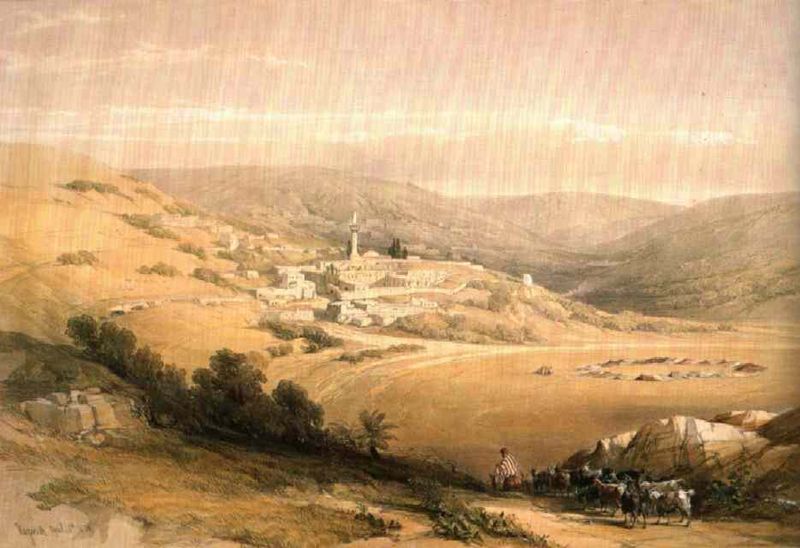 LIFE IN NAZARETH LIFE IN NAZARETH
The years of Jesus Christ’s human development are given only a few lines in the Gospels. Details are given of only one incident belonging to the period of childhood, the discussion of the 12-year-old Jesus with the Jewish teachers in the temple (Luke 2:41-50). This event is a pointer to one of the most characteristic features of Jesus’ later ministry: his display of irrefutable wisdom in dialogue with his Jewish contemporaries. It also reveals that at an early age Jesus was acutely aware of a divine mission. Nevertheless, Luke notes that in Jesus’ formative years he was obedient to his parents (2:51).
It is assumed that during thirty years at Nazareth Jesus learned the carpenter’s trade from his father, Joseph, and became the village carpenter after Joseph’s death. However, there is no account of this period in the Gospels. This has led many to fill in the blanks about Jesus’ childhood. Many of these fables are recorded in what are called apocryphal gospels-writings that are steeped in tradition and not counted as the inspired Word of God. Luke’s account is unembellished about the missing facts. Its remarkable reserve is a strong indication of its historical reliability. |
|
|
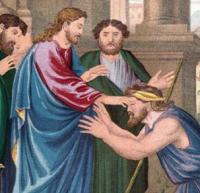 PREPARATORY EVENTS PREPARATORY EVENTS
All four Gospels refer to a brief preparatory period before Christ’s public ministry. This period focused on three important events.
|
|
|
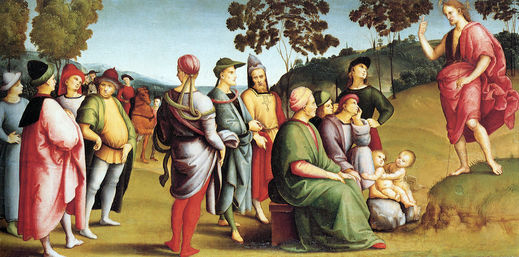 THE PREACHING OF JOHN THE BAPTIST THE PREACHING OF JOHN THE BAPTIST
John the Baptist appeared in the wilderness and caused an immediate stir in Judea, particularly as a result of his call to repentance and to baptism (Matthew 3:1-6). John was like one of the Old Testament prophets, but he disclaimed any importance in his own office except as the herald of a greater person to come. His stern appearance and uncompromising moral challenge effectively prepared the way for the public appearance of Jesus (Luke 3:4-6).
It is important to note that John the Baptist’s announcement of the imminent coming of the kingdom (Matthew 3:2) was the same theme with which Jesus began his own ministry (4:17).
This shows that John the Baptist’s work was an integral part of the preparation for the public ministry of Jesus. The same may be said of the rite of baptism, although John recognized that Jesus would add a new dimension in that he would baptize with the Holy Spirit and with fire (3:11).
As the forerunner of Jesus Christ, John proclaimed that the one to follow would not only be greater than he but would also come with high standards of judgment (3:12).
The stage was therefore set in stern terms for the initial public act of Jesus—his willingness to be baptized (3:13-15; Luke 3:21). |
|
|
 THE BAPTISM OF JESUS THE BAPTISM OF JESUS
John’s baptism was a baptism of repentance. Since Jesus submitted to this, are we to suppose that Jesus himself needed to repent? If this were the case, it would mean that Jesus had sinned. This is contrary to other evidence in the New Testament.
But if Jesus did not need to repent, what was the point of his requesting baptism at the hands of John? Jesus had come on a mission to others, and it is possible that he deliberately submitted to John’s baptism in order to show that he was prepared to take the place of others. This explanation is in line with Paul’s later understanding of the work of Jesus Christ (2 Corinthians 5:21).
Matthew is the one Gospel that records John’s hesitation to baptize Jesus (Matthew 3:14-15).
The most important part of the baptism of Jesus was the heavenly voice, which declared pleasure in the beloved Son (Matthew 3:17).
This announcement by God was the real starting point of the public ministry of Jesus. It revealed that the ministry was no accident or sudden inspiration on the part of Jesus. He went into his work with the full approval of the Father. A further important feature is the part played by the Holy Spirit in this scene. The dovelike description is full of symbolic meaning (3:16). The activity of the Spirit in the ministry of Jesus, although not emphasized in the Gospels, is nevertheless key to having a true understanding of Jesus Christ. |
|
|
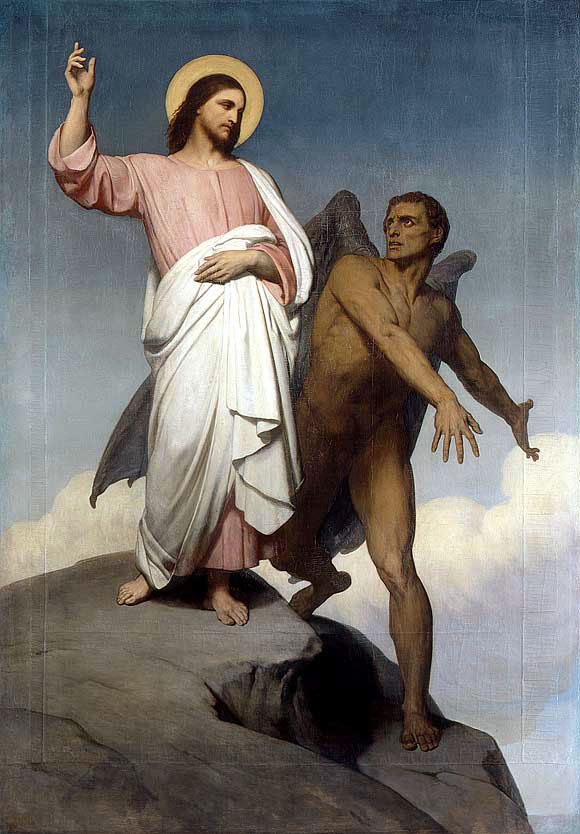 THE TEMPTATION OF JESUS THE TEMPTATION OF JESUS
Jesus’ baptism showed the nature of his mission. The temptation showed the nature of the environment in which he was to minister (Matthew 4:1; Luke 4:1-2).
Confrontation with adverse spiritual forces characterized Jesus’ whole ministry. Only Matthew and Luke record details of the temptations to which Jesus was subjected by the devil. All these temptations presented spiritual shortcuts to Jesus’ mission. However, Jesus gained the victory.
Both Gospels show that he accomplished this by appealing to Scripture. Jesus, leading by example, shows us the proper weapon against temptation. Jesus is also seen in this event as a genuine human who, like all other humans, was subject to temptation. The writer of the Hebrews notes that this fact qualified Jesus to act as High Priest and to intercede on behalf of his people (Hebrews 2:18; 4:15).
He was fully God and fully man. He was like us in every way, except that he never sinned. As a result, he was the perfect, innocent sacrifice required for our sins. |
|
|
 THE EARLY MINISTRY OF JESUS IN JUDEA AND SAMARIA THE EARLY MINISTRY OF JESUS IN JUDEA AND SAMARIA
Only John’s Gospel tells of the work of Jesus in Judea following his baptism. It first describes his calling of two disciples, John and Andrew (John 1:35-39).
This event is set against the background of John the Baptist’s announcement of Jesus as the Lamb of God who was to take away the sin of the world (1:29).
Three others soon joined these first two disciples: Peter, Philip, and Nathanael (1:41-51).
These five formed part of the nucleus of Jesus’ followers who came to be known as the Twelve. One feature of John’s account is the early recognition by the disciples of Jesus as Messiah (1:41) and Son of God (1:49).
Soon after Jesus began his ministry in Jerusalem, John relates an incident at Cana in Galilee in which water was turned into wine (John 2:1-10).
This event is important in John’s account because it is the first of the “signs” that he records (2:11).
He saw Jesus’ miracles as signs of the truth of the Gospel rather than as mere wonders. John sets two incidents at Jerusalem in this initial period. The first is the cleansing of the temple (2:13-16).
Matthew, Mark, and Luke all place this event just before Jesus’ trial, but John places it at this early stage. The moral intention of Jesus’ work is seen in his driving out the money changers who were inappropriately profiting from worshipers. This was apparently acceptable in Judaism but was unacceptable to Jesus. The other Gospel writers imply that this authoritative act was the event that sparked the final hostility of his opponents. John tells the story for a theological reason; to him, the cleansing of the temple was a parable telling of what Jesus had come to do.
The other incident in Jerusalem is the meeting between Jesus and Nicodemus (3).
Nicodemus was closely associated with Judaism, yet he was also searching for truth. He was unable to understand, however, the spiritual truth about being born again through the Spirit. Christians receive a new start in life—as if they had been born again.
Their spiritual rebirth marks the moment they accept Jesus Christ as Lord and Savior and receive the Holy Spirit John’s story then moves from Judea to Samaria and the story of the Samaritan woman at the well (John 4:1-42).
Jesus used her physical thirst to point to her deeper spiritual thirst. She realized that Jesus had something to offer her that she had not previously known. As a result of this woman’s experience and testimony, many of the Samaritan people came to believe in Jesus as the Savior of the world (4:42).
In this case, John appreciates the fuller significance of the words of Jesus by viewing them in the light of the resurrection. |
|
|
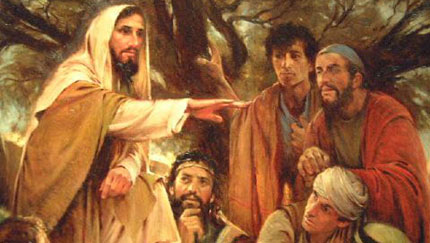 GALILEAN MINISTRY GALILEAN MINISTRY
Almost all the information on this period is found in Matthew, Mark, and Luke—referred to as the synoptic Gospels. These may be conveniently divided into three sections.
The first briefly outlines the events leading up to the choosing of the Twelve; the second deals with Jesus’ withdrawal from northern Galilee; and the third deals with his departure for Jerusalem. While the synoptic Gospels concentrate exclusively on the events in Galilee, John’s account indicates that there were some visits by Jesus to Jerusalem during this period.
Also, John records another incident at Cana, where the son of a Capernaum official was healed. This is noted as the second of Jesus’ signs (John 4:54). It is chiefly important because of the extraordinary faith of the father, who was prepared to take Jesus at his word.
|
|
|
 THE CALLING OF THE DISCIPLES THE CALLING OF THE DISCIPLES
In the synoptic Gospels, there is an account of the initial call to four of the disciples to leave their fishing boats and to become fishers of men (Matthew 4:18-22; Mark 1:16-20; Luke 5:1-11). They had already met Jesus and must have had some idea what was involved in following him. Jesus did not at this time appoint them to be apostles, but this call was an indispensable step toward the establishment of the Twelve as a group. Setting apart a particular number of disciples formed an important part of the ministry of Jesus.
The miraculous catch of fish, which preceded the call of the disciples in Luke’s account, served to highlight the superiority of the spiritual task of “catching” people rather than fish. Jesus offered to teach them how to be fishers of unbelieving men and women.
Another significant call came to Levi, otherwise known as Matthew (Matthew 9:9; Mark 2:13-14; Luke 5:27-28). As a tax collector, he was of a different type from most of the other disciples. Jewish contemporaries despised him because of his profession. But his inclusion in the special circle of Jesus’ disciples shows the broad basis on which these men were chosen.
One of the others, Simon the Zealot, may have belonged to a group of revolutionaries who were religious as well as political. Even a man like Judas Iscariot was numbered among the Twelve, and he would later betray Jesus to his enemies for a small sum of money. Jesus accepted them as they were and molded them into men who later came to learn how to be totally dependent on God and the power of his Spirit.
It commends moral and spiritual values. The teachings recorded in this section were radical but not in a political sense. The Sermon on the Mount may be taken as a fair sample of the kind of discourses that must have abounded in the ministry of Jesus.
Jesus 1 Jesus 2 Jesus 3 Jesus 4 Jesus 5 Jesus 6 Jesus 7 Jesus 8 Jesus 9 Jesus 10 Jesus 11
Jesus 12 Jesus 13 Jesus 14 Jesus 15 Jesus 16 Jesus 17 Jesus 18 Jesus 19 Jesus 20 Jesus 21 Jesus 22 Jesus 23
|
|
|

 Jesus Christ is the Messiah, Savior, and founder of the Christian church. Some know him by a more personal name. To Christians, he is the Lord of their lives. Regardless of his title, Jesus Christ is the most interesting figure in human history.
Jesus Christ is the Messiah, Savior, and founder of the Christian church. Some know him by a more personal name. To Christians, he is the Lord of their lives. Regardless of his title, Jesus Christ is the most interesting figure in human history. THE LIFE OF JESUS
THE LIFE OF JESUS THE INCARNATION
THE INCARNATION JESUS’ PRE-EXISTENCE
JESUS’ PRE-EXISTENCE


 THE GOSPEL RECORDS
THE GOSPEL RECORDS would give birth to the Messiah (Luke 1:26-38). She conceived miraculously by the Holy Spirit, as was foretold by the angel Gabriel:
would give birth to the Messiah (Luke 1:26-38). She conceived miraculously by the Holy Spirit, as was foretold by the angel Gabriel:  The visit of the wise men in Matthew 2:1-12 is significant because it links the beginning of the Gospel to its ending (compare to 28:19-20). A similar emphasis is introduced in the angel’s announcement to the shepherds in Luke 2:14 and in Simeon’s song (2:32), where he predicts that Jesus would be a light for Gentiles as well as a glory for Israel.
The visit of the wise men in Matthew 2:1-12 is significant because it links the beginning of the Gospel to its ending (compare to 28:19-20). A similar emphasis is introduced in the angel’s announcement to the shepherds in Luke 2:14 and in Simeon’s song (2:32), where he predicts that Jesus would be a light for Gentiles as well as a glory for Israel. THE SIGNIFICANCE OF THE VIRGIN BIRTH
THE SIGNIFICANCE OF THE VIRGIN BIRTH

 THE PREACHING OF JOHN THE BAPTIST
THE PREACHING OF JOHN THE BAPTIST THE BAPTISM OF JESUS
THE BAPTISM OF JESUS THE TEMPTATION OF JESUS
THE TEMPTATION OF JESUS
 GALILEAN MINISTRY
GALILEAN MINISTRY THE CALLING OF THE DISCIPLES
THE CALLING OF THE DISCIPLES